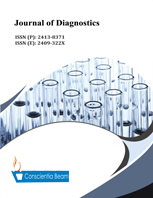The Outcome and Hepatic Function of an Extended Category II Treatment in a HIV-Seronegative Suspected Extensively Drug-Resistant TB Patient
DOI:
https://doi.org/10.18488/journal.98.2020.71.1.6Abstract
A 25 year old HIV- seronegative client was diagnosed with pulmonary tuberculosis and placed on Category I (CAT I) treatment. After two months, acid fast bacilli (AFB) persisted in sputum. Rifampicin (Rif) resistance was detected with the GeneXpert MTB-Rif Assay® (Xpert; Cepheid, Sunnyvale, CA, USA), leading to a change in treatment to CAT II after completing CAT I in the third month. Continuous detection of Rif resistant species and persisting ‘Scanty’ results (1-9 AFB found in 100 microscopic fields) from sputum smear microscopy (SSM) after one (1) year was suggestive of treatment failure to CAT II [possible extensively drug-resistant (XDR) species]. Category II treatment was continued for the next eight months as we anticipated the arrival of XDR medicines. Before commencement of XDR medication, SSM and GeneXpert were repeated. The SSM result was negative (no AFB seen), while Rif resistance persisted. The controversy was eventually clarified with the Bactec Mycobacteria Growth Indicator Tube (MGIT) liquid culture, which indicated no growth for M. tuberculosis. Since the rapid molecular GeneXpert will persistently detect Rif resistance even after months of treatment, we support the use of MGIT to confirm when treatment should be halted. This case study also showed tolerance to prolonged treatment with CAT I and II drugs and confirms evidence in existing literature.

